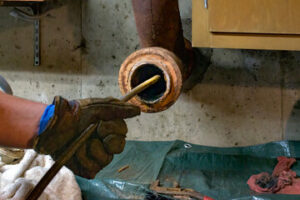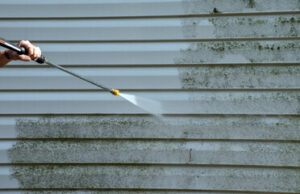Rodents like rats and mice chew electric wires, destroy crops, and carry bacteria that can cause human disease, such as Hantavirus pulmonary syndrome, leptospirosis, plague, and salmonella. Mating disruption techniques and nematodes (microscopic worms that live in the soil, and some are helpful) can be beneficial.
Physical controls include traps, screens, fences, radiation, heat, and chemicals. Contact North Vancouver Pest Control now!

The goal of prevention is to stop pests from getting into buildings or causing damage before they become a problem. Prevention strategies include thoroughly inspecting interior and exterior areas, identifying entry points, and eliminating attractants. It’s important to know a pest’s lifespan and life cycle, as well as its preferred environment so that proactive measures can be taken to prevent infestations.
Pests enter structures primarily in search of food, water or shelter. They are a health and safety hazard, carrying disease-causing organisms on their bodies, in their droppings, or in their secretions (e.g., cockroach saliva). They can also cause physical damage to the structure and its contents, such as contamination of food by rodent droppings or insect parts, or structural damage caused by chewing and scratching.
Prevention can be as simple as sealing cracks and crevices where pests may enter, or removing clutter where pests can hide. It can also include regularly inspecting and cleaning garbage receptacles, preventing them from being overfilled, and ensuring they are sealed tightly. Proper landscaping and regular maintenance can also help to limit pest access to the property, by keeping grass and weeds trimmed away from the building, and avoiding overgrowth that can provide cover or food sources for pests.
Often, when pest populations reach unacceptable levels, the use of chemical controls is needed. However, the most effective and economical pest control is prevention. Pesticides kill or injure pests but don’t always achieve desired results because they don’t target all stages of the pest, and resistant strains are developing.
A better alternative is biological controls. Birds, reptiles, fish, and mammals prey on some pests and can significantly reduce their numbers. Other natural enemies, such as parasites, nematodes, and pheromones, also suppress pest populations.
Some of these methods are used in combination with pesticides to increase their effectiveness. For example, pheromones can trigger the emergence of natural predators or repellents, and mycoplasmas can interfere with an insect’s growth by inhibiting its cell membranes.
Suppression
Suppression of pests refers to efforts to reduce their numbers below a threshold at which they cause unacceptable harm. Integrated pest management is often used as a way to achieve this goal. This approach involves using a combination of physical, biological, and chemical control methods to reduce pests to acceptable levels.
Physical control involves using traps, screens, and barriers to prevent pests from entering an area. These methods are sometimes called mechanical controls, and can include radiation, heat or electricity to alter the environment and make it unsuitable for pests. Some physical controls can also be incorporated into the design of buildings and other structures to prevent pests from accessing them.
Biological pest control uses parasites, pathogens and other organisms to suppress pest populations. Parasites attack and consume the cells of their host, while pathogens and disease-causing microorganisms can infect or kill hosts. The nematode, which are microscopic worms found in the soil, can also be used to suppress pests. The nematode Steinernema carpocapsae, for example, attacks and kills the grubs that eat crops.
Chemical pest control includes herbicides, insecticides and fungicides. These substances can be applied to crops or sprayed around homes to kill or repel pests. Some of these products are available over the counter; however, when used improperly or by unskilled people, they can be dangerous. Chemicals can also be used to sterilize surfaces and equipment in food processing environments.
Various methods can be used to monitor pest populations, such as using baits that attract or trap them, capturing and counting them, or measuring the amount of damage they do. Pheromones can also be useful for monitoring pests. For example, by placing a synthetic version of the pheromones female insects use to attract males, a control technique known as pheromone mating disruption can be used to reduce pest numbers.
Eradication of pests is usually considered a last resort. The process can be time-consuming, expensive, and disruptive to the environment. It can also be difficult to confirm that the eradication effort was successful. In addition, the intense eradication of a pest species can cause population declines in other natural predators and/or environmental changes that may result in the re-establishment of the pest population at a higher level than it had prior to eradication.
Eradication
Pest control methods aim to eliminate a pest infestation. They do not necessarily all involve chemical controls, although this is common. Rather, most pest control methods rely on different physical or biological means to manage a pest. Accurate pest identification is a crucial part of any successful pest control program. This information can be used to determine basic life history and risk factors and to develop control strategies.
Pests are those organisms that negatively impact human health, crops and the environment. They can spread diseases, contaminate food, and damage property. Some may also cause allergies, such as bed bugs, cluster flies and wasps. Others can cause direct economic losses, such as ants, termites and boxelder bugs. They often have a grotesque appearance, such as silverfish and house centipedes, or a fearsome sting or bite, like bees, mud dauber wasps and yellow-jackets. Pests can also spoil, stain and smell bad, such as moths, pine seed bugs, cockroaches and mice.
The word pest comes from the Latin term for “bad odour.” Many pest control measures are odorous or tasteless, but some use poisons to kill or deter organisms. These chemicals are called pesticides and include herbicides, insecticides and fungicides. They are used in agriculture and by consumers to control unwanted plants, weeds, insects, rodents and microbes.
Biological controls are generally natural, and most of these methods are less invasive than other pest control techniques. These approaches typically reduce a pest population to below economic damage levels by introducing its own natural enemies, such as predators, parasites and pathogens. Some methods also manipulate the environment to create suitable conditions for the pest’s enemies, such as introducing specific temperatures or using pheromones and juvenile hormones.
Eradication of a disease requires that all potential sources of transmission be controlled. This is an extremely challenging task, and it has been the focus of several major international eradication programs, including malaria and guinea worm. Despite the success of these programs, it is not possible to guarantee that the responsible microbe has been eliminated. This is because of the complexity of the biological systems that govern a microbe’s ecology, which involves interactions between vectors, intermediary hosts and humans.
Monitoring
Pests must be monitored to assess their level of infestation and to take action when necessary. Monitoring can be done by scouting or using pest trapping devices. The information gained from monitoring may be used to determine the number of pests, their location and their damage levels. This information is then analyzed to make decisions about treatment.
The pest control industry uses a system called threshold-based decision making to manage pest populations. Thresholds are the population levels at which a pest must be controlled to prevent unacceptable damage or injury. These thresholds are established through a combination of scouting, identifying the pest correctly, and monitoring traps and other detection systems. The thresholds must be based on the type and quantity of pests present and the environment.
Generally, pests are classified as continuous (nearly always present and requiring regular pest control) or sporadic or migratory (occurring intermittently and requiring occasional pest control). To decide which methods to use in an integrated pest management program, it is important to know exactly what pests are in the collection and their life cycle. This enables heritage custodians to choose the most appropriate physical, biological and chemical techniques to treat a specific pest problem.
Some pests must be controlled immediately, and these are often those which cause serious damage. These include pathogens in operating rooms and other sterile areas of health care facilities, and insects such as Japanese beetles which can destroy horticultural crops. Control measures can include fumigation or other heat treatments to kill the pests and then cleaning and disinfecting areas where the pests have been.
Other pests, such as rodents and birds, may be a nuisance but do not damage collections. The presence of these pests may be controlled with good housekeeping, excluding them from the building and regular inspection and monitoring. This allows the custodian to avoid the use of toxic chemical pesticides, which can permanently contaminate objects and create human health and environmental concerns.
In food processing, most manufacturers employ a staff of pest control technicians to inspect the plant on a scheduled basis, along with other company personnel who can spot problems. A record-keeping system is essential and should contain the date, pest identification, location, damage level, report and actions taken.





